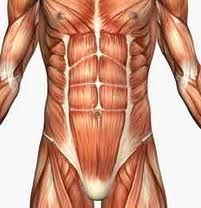(This is part 2. If you haven’t already, you can ready part 1.)
The two most important muscles in the human body that protect the spine are the transverse abdominis and the multifidus muscle. The multifidus is a small but powerful muscle in the back that lines the spine as it attaches to adjacent vertebrae. Its main functions are to stabilize the spinal segments while it rotates and extends the back.
 One method to begin strengthening the multifidus muscle, the patient will start lying down on their stomach, also called the prone position, with their feet hanging off the table. The therapist will resist while the patient tries to lift one leg off the table. This creates a relative rotation of the spine, forcing the multifidus to contract isometrically, or without the spine moving. In order to make sure the multifidus is firing, the therapist can palpate just lateral to the opposite side of the spine that the leg is being resisted as they should feel a tightening of the multifidus lining the spine. After the isometric contractions, the patient may perform the same exercise in a concentric/eccentric form with small prone flutter kicks while not rotating the pelvis.
One method to begin strengthening the multifidus muscle, the patient will start lying down on their stomach, also called the prone position, with their feet hanging off the table. The therapist will resist while the patient tries to lift one leg off the table. This creates a relative rotation of the spine, forcing the multifidus to contract isometrically, or without the spine moving. In order to make sure the multifidus is firing, the therapist can palpate just lateral to the opposite side of the spine that the leg is being resisted as they should feel a tightening of the multifidus lining the spine. After the isometric contractions, the patient may perform the same exercise in a concentric/eccentric form with small prone flutter kicks while not rotating the pelvis.
A transition after the prone exercises will be to have the laying down on their back with their knees bent and feet on the table. From this position the patient will performing a bridge beginning with both legs and transitioning to single leg. The important aspect of this exercise for spinal stability is keeping the pelvis level and having the patient performing the drawing in maneuver to contract their transverse abdominis from last week since these muscles work together to stabilize the spine.
These few basic exercises are a great start for anyone with or without back pain to get started on, when building a strong “core.”

